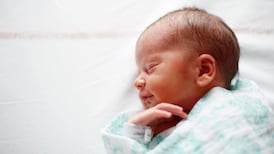A recommendation has been made that hospitals review the protocols governing the use of restraining belts on patients.
The call was made by a jury at an inquest in Mallow which heard details of how a 75-year-old woman choked to death after becoming caught in a restraining belt on a chair in a geriatric psychiatric hospital.
The jury issued the recommendation on restraining belts as a rider to their verdict of death by misadventure in the case of Hannah Comber from Ballylopin, Ballyhea, Charleville, Co Cork, who died while a patient at Heatherside Hospital in north Cork on June, 22nd, 2006.
Ms Comber was reported by hospital staff as having "passed away" and it was only following a postmortem by Assistant State Pathologist Dr Margaret Bolster that it emerged Ms Comber died from asphyxia after getting caught in the chair restraint.
The failure of a number of hospital staff to report the exact circumstances of Ms Comber's death led to a Garda investigation, but after studying a file on the matter, the DPP declined to prosecute any of the staff involved.
Yesterday's inquest heard Ms Comber had been a patient at Heatherside for 35 years and suffered from schizophrenia. She had been quite aggressive when first admitted, but had mellowed with age although she used to get out of bed at night.
Ms Comber was one of 27 patients being cared for in St Mary's Ward on the night of June 22nd, 2006, by two staff nurses, Rita Dowling and Teresa Carroll and care attendants, Mary Jo Keating and Teresa Barrett, the inquest heard.
Ms Comber had got restless at around 1.30am and staff nurse Dowling and Ms Keating had got her up and dressed her. They put her in a special chair recommended by an occupational therapist, tied a lap belt restraint and brought her to the day-hall area.
Ms Keating told gardaí in a statement that she dozed off in a chair while watching over Ms Comber, but her solicitor Denis Linehan told yesterday's hearing that she denied that this was correct even though she stood over everything else in her statement.
"I got up out of the chair and went over to check on Hannah Comber . . . she had slipped off the seat but was still not fully on the ground. The belt of the chair was around her neck - it was like she got a weakness, but she was sitting down when she got it," Ms Keating told gardaí.
Ms Dowling told the inquest that she found Ms Comber sitting with her back against the chair, her hands were by her side and the lap belt was on "her upper chest". There was no sign of asphyxia such as bulging eyes and she thought she might have had a coronary.
However, in a statement that she gave to gardaí, Ms Dowling said that when she went into the day hall she "found Hannah slumped on the chair with the lap belt fastened across her throat" and she "heard gurgling noises coming from Hannah's throat".
"In my opinion, Hannah died as a result of the lap belt strangling her. The information was not reported in the case-plan notes; the reason was instant shock, I couldn't get my head around what had happened. I knew it was wrong and I should have. I'm very sorry."
Ms Dowling said this statement was incorrect and she claimed she was coerced into making it by gardaí. "I was told that I had told lies and I was threatened with a murder inquiry . . . well I'm certainly not a murderer. I did what I did to the best of my ability."
This was denied yesterday by investigating officers, while Dr Bolster was emphatic that Ms Comber died from asphyxia as a result of her neck becoming entangled in the restraining belt of her chair.
She said that while it was possible for asphyxia to occur from a restraint belt across the upper chest, this would not explain the prominent mark on Ms Comber's throat which was consistent with pressure from the buckle of the belt.
Ms Comber's death is currently the subject of an ongoing Health Service Executive investigation.







